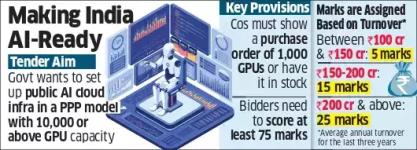Food Subsidies & Social Welfare in India
It is puzzling and perplexing to watch Rahul Gandhi shout needlessly on behalf of the middle class. Tomorrow, he will be making noise on behalf of the poor. These outcries are political and far from the truth.
Over the past 20 years, including the Dr. Manmohan Singh era, both the poor and the middle class have been well taken care of. Let's first review India’s extensive welfare system, details of which are rarely highlighted in the media. Although this system was designed for the poor, the middle class has significantly benefited from it.
Under the National Food Security Act, the government spends $24 billion annually (Rs 2 trillion) on subsidized grain. Beneficiaries include 75% of the rural population and 50% of the urban population, which encompasses a substantial number of middle-class individuals. During the pandemic, the government spent $47 billion over three years (2020-23) on subsidized grain, with the middle class being significant beneficiaries.
The Mahatma Gandhi National Rural Employment Guarantee Scheme, another substantial welfare program, sees the government spending about $11 billion to guarantee minimum wages to the rural unemployed. Here, the middle class is not the beneficiary.
With India's poverty rate now below 10%, the middle class has risen to 41% from 14% in 2005. This marks a substantial increase in the urban class population. Although poverty has not been eradicated, it is rapidly declining.
The McKinsey Global Institute, which defines India’s middle class as households with real annual disposable incomes between 200,000 and 1 million rupees ($3,606 to $18,031), estimates that the middle class has grown from 50 million in 2005 to over 250 million in 2015. By 2025, it is projected to more than double to 583 million—41 percent of the population. Hence Middle Class has progressed well.
With increasing national prosperity, politicians often push for more funds for their own agendas. Examples abound: farmers agitating for higher produce prices despite significant agricultural subsidies, the defense sector seeking unlimited cash for modern acquisitions, Andhra Pradesh requesting substantial funds to complete the new capital city at Amravati, Bihar pleading for more funds due to decades of mismanagement, and the ongoing need for ignored modernizing infrastructure like roads, rail, ports, and airports to remain competitive are a higher priority. Also when government cash boxes are opened for greater spending, politicians often seek to line their pockets with government cash, and the Congress Party is no stranger to it. Hence government spending should be kept in a low profile.
In the above financial equation, when you account for interest payments on national debt, salaries and pensions of government employees, healthcare subsidies, housing and other welfare schemes, and transfer payments to states and union territories, there is not much left to further support the 600 million middle class. Their hard work has already made them prosperous, and they benefit from many government schemes, so they are relatively well off.
If Rahul Gandhi truly understands what he's saying, he should be less vocal about pleas on behalf of the middle class, which appears to be a tactic to garner urban votes.
It is puzzling and perplexing to watch Rahul Gandhi shout needlessly on behalf of the middle class. Tomorrow, he will be making noise on behalf of the poor. These outcries are political and far from the truth.
Over the past 20 years, including the Dr. Manmohan Singh era, both the poor and the middle class have been well taken care of. Let's first review India’s extensive welfare system, details of which are rarely highlighted in the media. Although this system was designed for the poor, the middle class has significantly benefited from it.
Under the National Food Security Act, the government spends $24 billion annually (Rs 2 trillion) on subsidized grain. Beneficiaries include 75% of the rural population and 50% of the urban population, which encompasses a substantial number of middle-class individuals. During the pandemic, the government spent $47 billion over three years (2020-23) on subsidized grain, with the middle class being significant beneficiaries.
The Mahatma Gandhi National Rural Employment Guarantee Scheme, another substantial welfare program, sees the government spending about $11 billion to guarantee minimum wages to the rural unemployed. Here, the middle class is not the beneficiary.
With India's poverty rate now below 10%, the middle class has risen to 41% from 14% in 2005. This marks a substantial increase in the urban class population. Although poverty has not been eradicated, it is rapidly declining.
The McKinsey Global Institute, which defines India’s middle class as households with real annual disposable incomes between 200,000 and 1 million rupees ($3,606 to $18,031), estimates that the middle class has grown from 50 million in 2005 to over 250 million in 2015. By 2025, it is projected to more than double to 583 million—41 percent of the population. Hence Middle Class has progressed well.
With increasing national prosperity, politicians often push for more funds for their own agendas. Examples abound: farmers agitating for higher produce prices despite significant agricultural subsidies, the defense sector seeking unlimited cash for modern acquisitions, Andhra Pradesh requesting substantial funds to complete the new capital city at Amravati, Bihar pleading for more funds due to decades of mismanagement, and the ongoing need for ignored modernizing infrastructure like roads, rail, ports, and airports to remain competitive are a higher priority. Also when government cash boxes are opened for greater spending, politicians often seek to line their pockets with government cash, and the Congress Party is no stranger to it. Hence government spending should be kept in a low profile.
In the above financial equation, when you account for interest payments on national debt, salaries and pensions of government employees, healthcare subsidies, housing and other welfare schemes, and transfer payments to states and union territories, there is not much left to further support the 600 million middle class. Their hard work has already made them prosperous, and they benefit from many government schemes, so they are relatively well off.
If Rahul Gandhi truly understands what he's saying, he should be less vocal about pleas on behalf of the middle class, which appears to be a tactic to garner urban votes.
















